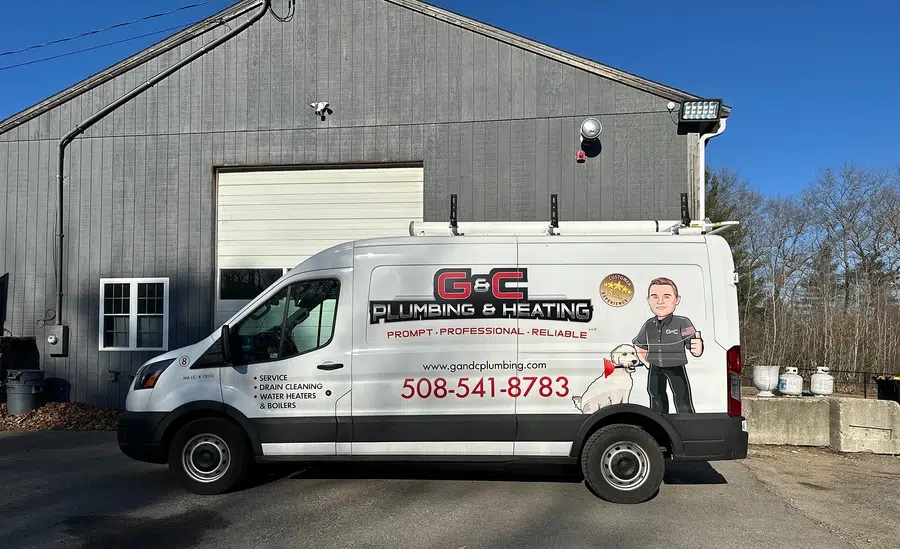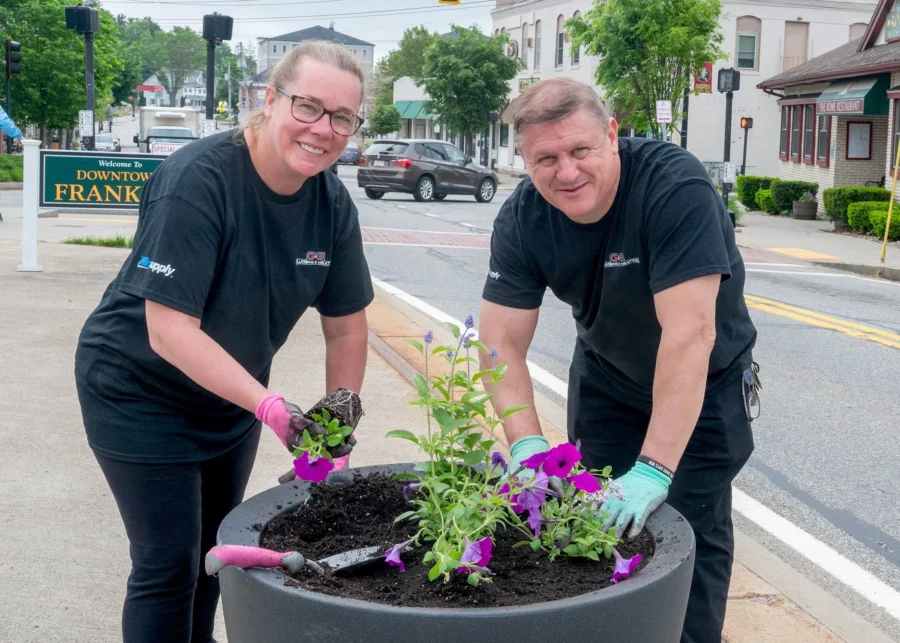
The guys at G&C Plumbing and Heating have discovered many causes for flooding in a home over the years but washing machine hoses are typically enemy number one. This often-overlooked piece of equipment can cause thousands of dollars’ worth of damage to your home.
G&C has attended to hundreds of customers suffering from a hose bust, and the primary cause they run into is: Rubber hoses.
Stainless steel-braided hoses with auto-shutoff are simply the best option for homeowners
“As rubber ages, it loses flexibility, and since washing machine hoses are typically installed and then completely forgotten about, it’s just a matter of time for a rubber washing machine hose to eventually fail,” said Greg Sheck the Grand Master Plumber at G&C.
A worn-out washer hose can burst, releasing gallons of pent-up water into your home.
If no one is home to shut off the water supply valve, the resulting flood can destroy the house. To avoid the eventual problem with the rubber washing machine hoses, you could set a calendar to replace it every few years, but who has time for that?
Greg’s solution: Stainless steel-braided hoses with auto-shutoff.
“Stainless steel-braided hoses with auto-shutoff are simply the best option for homeowners,” said Sheck.
“These hoses are made of flexible plastic encased in stainless steel and have a shut-off mechanism at one end as an added safety feature.” While no washer hose is truly burst-proof, stainless steel-braided hoses with auto-shutoff are the closest you can get because if the hose bursts, the connector will sense the water pressure change and stop the flow of water.
“The auto-shutoff device can mean the difference between a little water on the laundry room floor and extensive flood damage to your home,” said Sheck.
So…
Roll up your sleeves and change out those rubber hoses.
You’ll need: New hoses, a bucket, pipe wrench, and some confidence.
- Buy proper lengths of stainless steel-braided hoses with auto-shutoff.
- Run the washing machine for a few minutes to drain any remaining water out of the hoses.
- Turn off the water supply.
- Unplug the washing machine and pull it out from the wall. There will be three hoses: a large drain hose and two smaller ones (for hot and cold water). The smaller ones are what you’ll be replacing.
- Place a bucket under the connection to catch any water and use a pipe wrench to remove the old hoses.
- Make sure that the washer is properly placed in the hose connectors and attach the new hoses.
- Tighten all four connections until you feel strong resistance, then slowly turn on the water supply to check for leaks.
- Push the washing machine back into place, leaving at least four inches of space between the machine and the wall so the hoses don’t kink. In tight spaces, when the hose may become bent or kinked, the braided stainless steel can dig into the hose underneath. You can get a hose that has an elbow at the end to prevent this problem.
You’ve done it!
Now you’ll just need to check the hoses periodically for leaks and replace them immediately if you see any signs that they’re wearing out. If all of this just seems too much for you, feel free to call the guys at G&C, they would love to help!
Sheck Tip: Shut off water supply valves when you will be away from home for a prolonged period of time (such as vacation). The constant water pressure on the washing machine hoses can contribute to hose failure.
Call (508) 966-8919














